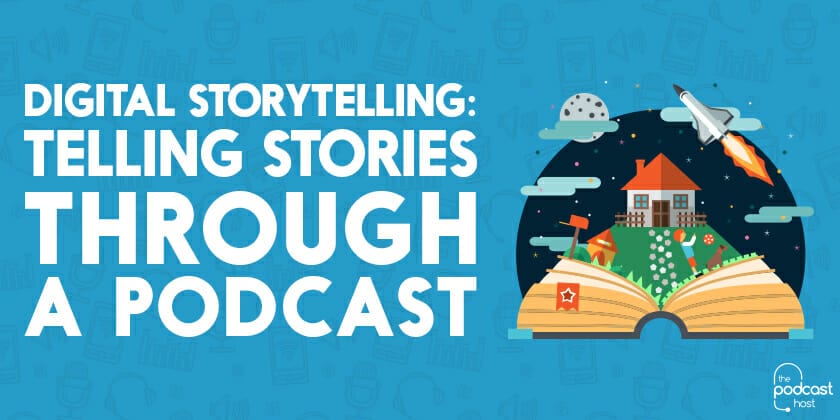Digital Storytelling: Telling Stories Through a Podcast

Over the past few weeks, I’ve talked about ways to make your podcast more interesting by engaging your audience with a narrative or a digital storytelling aspect. I’ve also provided some tips on how to organize your podcast to help achieve that. When you want to tell a compelling story, it’s essential you understand the structure of a story and how to apply it to your style. This will move you toward a more dynamic podcast.
The Beginning, Middle, and End
There are five parts to a story: exposition, rising action, climax, falling action, and resolution. Although we normally hear these parts as they relate to fiction, they also apply to other types of storytelling, anecdotes, and narratives.
First ensure your story has a beginning, middle, and end. I’ve always thought it was silly to formally point out that a story must have a beginning, middle, and end. Of course it has a beginning, middle, and end! Any complete sentence has a beginning, middle, and end; however, when we look at this oversimplified adage a little more closely, it’s clear that it speaks to the elements of a story. A beginning, middle, and end is just an easy way to say a story needs exposition, rising action, climax, falling action, and a resolution.
Beginning: Exposition
Middle: Rising Action/Climax/Falling Action
End: Resolution
Organize & Structure
The prewriting process covered last time can incorporate outlining your narrative. Don’t worry. An outline does not have to be the formal, boring exercise you learned in grammar school or university composition. You don’t have to organize it into roman numerals with perfectly formatted, lettered indents and nested details, unless you just like making outlines.
An outline can be as simple as a list:
- Exposition: Introduce the story
- Rising Action: Build the tension
- Climax: The exciting bit
- Falling Action: Set up the resolution
- Resolution: End the story
Embellish, Then Stop
Take a few minutes and make a simple outline following this model to structure your narrative. Once the parts of your story are clear, stated in a straightforward way, you can embellish as much as the story requires. This is the trick for many: knowing when to stop. Always keep in mind your audience, for this is all for the benefit of them, first and foremost.
 Dramatic Structure
Dramatic Structure
These five steps are also known as dramatic structure. Once you decide your podcast’s topic or story, and you have outlined the beginning, middle, and end in a simple format, it’s time to expand:
- Exposition: Think of three points that further develop the introduction of your tale.
- Backstory of events leading up to the story
- Important information on characters
- Setting the scene
- Rising Action: Building interest and tension (conflict)
- Interesting events or information to deepen interest
- The most important parts of the story
- Information that the climax is dependent upon
- Climax: Turning point, often exciting or heartbreaking
- Height of the conflict within the story
- Revealing a secret
- A twist in the plot
- Falling Action
- The conflict falls apart
- Last information or moment of suspense
- The direct result of the climax; setting up the resolution
- Resolution
- Tie up loose ends of the plot
- Information or closure to leave your audience feeling satisfied
- Looking to the future.
Use this example of expanding an outline to help develop your digital story into a smooth, captivating narrative. Even if you’re teaching a lesson or speaking about a specific topic, storytelling engages readers and keep them coming back for more. By giving your audience something they can relate to–someone they can root for–you’re connecting with them on a very personal level, and that’s when you’ve made a devoted listener.
Looking for More?
If you want even more digital storytelling goodness, check out the episode of Podcraft on the subject: The Art of Podcast Storytelling with Dan Feld.

